

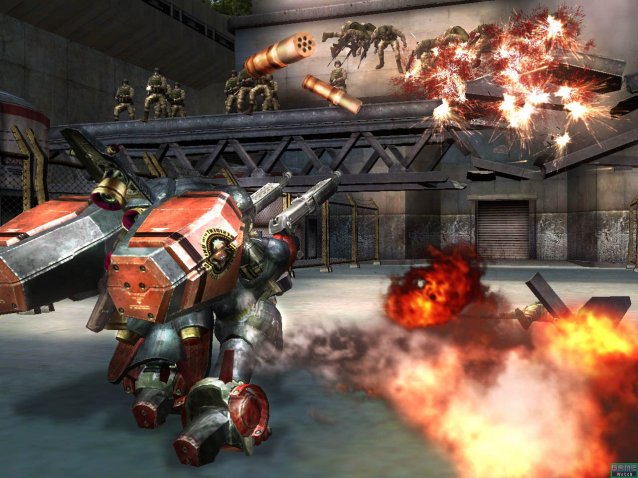
Despite sharing countless titles and franchises, the Eastern and Western video game markets are markedly distinct. While in North America and Europe we’re familiar enough with Mario Bros. and Dark Souls, there are countless titles that have never made the transoceanic jump.
There are plenty of reasons for this: Sometimes games rely on a specific cultural idiom that doesn’t translate well, or game mechanics that haven’t found an audience in either market. Sometimes developers don’t have the time or money to devote to localization. And other times, publishers just make downright baffling decisions.
Here’s our list of Ten Games That Will Never Be Released in the West – ten games we think should have found their way from Japan and into the hands of North American and European gamers, but never did and probably never will. While in some cases there are workarounds, we still think it’s tragic that western fans won’t get a release of these titles (at least, in most cases).
Have a favorite imported title? Tell us about it in the comments!
If Rockman looks a tad familiar, that’s because his name in the West is Mega Man, one of console gaming’s most beloved characters ever. There have been ten Mega Man titles released in western markets, beginning with Mega Man for the NES in 1987. The latest, Mega Man 10, came out in 2010.
In those ten games, however, western audiences have only gotten to see the robot hero from the side – Mega Man has always been a 2D action platformer, and almost exclusively in the 8-bit style established in the first game.
But in 2001, developer Dream Come True released Rockman Strategy for PC under license from Capcom exclusively for the Taiwanese market. In it, Mega Man and his pals do battle with Dr. Wiley’s minions in a turn-based battles in an isometric perspective. It uses a tactical positioning system akin to Fire Emblem’s, and a combat system more reminiscent of traditional JRPGs.
The chances of it ever seeing a western rerelease and localization are basically nil. Mega Man as a brand in the U.S. is inextricably bound to the 8-bit, two-dimensional look of the original games, and while a fan translation project exists, Capcom is unlikely to bother resurrecting this title, despite the enduring fandom Mega Man has outside of Asia.
Densha de Go was a massively popular train simulator franchise that put players in the seats of real-world Japanese train and tram operators. It’s hyper-realistic: the scenery consists of 1:1 replications of train lines around Tokyo, Osaka, and other Japanese cities, and the game challenges players to adhere to incredibly strict train timetables. You’re awarded points for arriving as close to half a second from the scheduled time, and for stopping within 30 centimeters (that’s less than a foot) from the target point at the station.
This wasn’t just a one-off: To date there have been eighteen distinct Densha de Go games, and they’ve appeared on PlayStation, PlayStation 2, PlayStation 3, PC, WonderSwan, Nintendo 64, GameBoy Color, Sega Saturn and Dreamcast, Neo Geo Pocket Color, PSP, and Nintendo DS. There’s even a version available in the Apple App Store – but only if you live in Japan.
And even though the Densha series has its own line of peripherals, you’ll never see it in Western markets. Despite its rampant success in native Japan, the developers (including Taito, Square Enix, and Ongakukan) don’t see much interest in American or European markets and have gradually been shuttering the series at home. They even named the latest (console) entry in the series Densha de Go FINAL.
It’s pretty hard to get your hands on most Gundam games if you live outside Japan, and that’s a shame: the property has tons of worldwide fans earned since the first anime series, Mobile Suit Gundam, debuted in 1979.
More than 80 Gundam-themed games have been released, and while several have made it to North America and Europe, most have remained in their native Japan. SD Gundam G Generation 3D is one. Released for the Nintendo 3DS by Bandai Namco in 2011, it takes many cues from Super Robot Wars, but adds in a squad system and the ability to “evolve” Gundam suits from Mobile Suit Gundam to Victory Gundam by means of complex development trees.
The game’s heavy emphasis on tactics and statistics study seems to be the sticking point for Namco Bandai, as the format may not be seen as financially viable in western markets. It’s a shame, though, for the countless Gundam superfans, many of whom are raising kids of their own to love battles between super-powered space robots.
Where Smash Bros. has always taken popular characters from established Nintendo franchises and thrown them into platform-based battle arenas, Jump Super Stars for the Nintendo DS does the same thing with popular characters from the shōnen manga digest magazine, Weekly Shonen Jump.
There are 27 popular manga series represented in the game, including several that have been major hits in the U.S. and Europe: Naruto, Bleach, Yu-Gi-Oh!, Hunter x Hunter, and Dragonball. You have the usual Smash Bros.-style fighting game action for 2-4 players, with the added ability to build a custom manga using a deck of differently-sized koma, or illustrated panels, on the 3DS’ bottom screen. Each koma provides different buffs or healing to the characters onscreen, and you’ll arrange them into a page layout prior to each battle.
As terrific as all this sounds, there’s almost no way it’ll ever see an official western release: There are simply too many properties represented in the game, and licensing would be a legal and financial quagmire for Nintendo. The good news is that since physical copies of DS games aren’t region-locked, you can fairly easily import the game and use it on a western handheld.
While The Legend of Zelda: The Wind Waker is almost universally praised as one of the best entries in a long series of beloved games, there’s a bit of a fly in the ointment: Tingle, the 35-year-old weirdo who dresses up like the fairies of the forest and gives Link a bunch of annoying fetch-quests.
While many American gamers completely despise Tingle, he’s a huge star in Japan and has enough of a cult following for Nintendo to give him his own line of spin-off games, including Tingle’s Balloon Fight DS and Irozuki Tincle no Koi no Balloon Trip, the sequel to another Tingle-centric game, Freshly-Picked Tingle’s Rosy Rupeeland. The latter pair did see a European release but have stayed away from American shores, largely due to the large number of vocal Tingle haters found in the U.S.
Tingle’s Balloon Fight DS is a fairly straightforward update and reskin of the classic NES title Balloon Fight: Tingle grabs a pair of balloons, floats around the level, and tries to pop his enemies’ balloons.
Then you fly him down to the bottom of the screen and let the giant fish eat him because Tingle is awful.
Safe to say that Monster Hunter is finding its footing in western markets, thanks in a large part to the international release of Monster Hunter IV Ultimate earlier this year, which sold more than 3 million copies in its first week on the shelves. Americans and Europeans, it seemed, were finally able to find the brilliant game hiding at the summit of the franchise’s legendarily steep learning curve.
But it hasn’t always been that way. It’s only been since Monster Hunter 3G that western gamers were able to play localized versions of a Monster Hunter game, and while it has been one of Japan’s most-loved games across many demographics for quite some time, its appeal is quite a bit more niche overseas.
Which is probably why there won’t ever be a western release of the newest MMO version of the game, Monster Hunter Frontier G, which came out in Japan in 2013 for PC, Xbox 360, PlayStation 4, Wii U, and PS Vita. A PC beta has also been released for Taiwan, but that’s about as far as its gone despite persistent hopeful rumors of a western version.
Rumor has it that Capcom has its Korean studio working on a sequel that will naturally have Korean localization, but there’s been no word at all on expanding to western markets, where subscription-based MMOs have been in steady decline in recent years.
Sega has been teasing fans with promises of a western release of Phantasy Star Online 2 since PAX Prime in July 2012, when it showed off an English localization of their popular free-to-play MMO.
Long-time series devotees have been waiting on baited breath for years to return to the Phantasy Star sci-fi role-playing universe, which began in 1987 on the Sega Master System and has seen iterations on almost every major console since then.
The game features action-heavy combat, tons of classes that each cater to a different playstyle, gigantic open environments, and hordes of enemies.
But it debuted for PC in 2012, with a Vita version following in 2013. At PAX Prime in 2012, Sega said they were planning on a western release sometime in 2013, but since then there’s been little progress. The latest news is that a version will come out for PlayStation 4 in 2016 – but only for Japan. At present, the western release is listed as being “delayed indefinitely,” which is usually industryspeak for “never.”
It’s possible to play Phantasy Star Online 2 in western territories, but there are problems: First, you’ll need a fan-created localization patch, which only translates the text stored client-side. Second, you’ll have to violate the game’s terms of service and play on Japanese servers.
Released for the NeoGeo Pocket Color in 2000, Big Bang Pro Wrestling was the last game SNK completed prior to bankruptcy and subsequent buyout by Playmore. It’s a classic-style 2D wrestling game, featuring ten fighters and a skill-intensive grappling system.
The throwback art style matches the WWF-era theme. The game let you play against the AI, another human player, or in a series of eight matches as you fought your way to the IEW championship. It was a solid game that took time and effort to master – you would pull off a move by timing your input just right, after the wrestlers had made contact, but before your opponent. Too early or too late meant losing the exchange, and getting thrown in one of several creative ways.
Unfortunately, the Pocket Color foundered in the U.S. and struggled against Nintendo’s Gameboy Advance. SNK meanwhile found itself underfunded by its parent company Aruze, an American pachinko machine manufacturer.
While SNK was resurrected shortly after bankruptcy, Big Bang Pro Wrestling got lost in the shuffle. Despite having had a full English localization, it never saw – and likely will never see – a western release.
The first Valkyria Chronicles for PlayStation 3 is loved as one of the platform’s instant classics. The combination of tight tactical combat, a fantasy World War II setting, and a delightful pencil and watercolor aesthetic even made its lackadaisical PC port well worth playing. Unfortunately, western gamers will never get a chance to play the third and final game in the series.
In a story that runs concurrent with the events in the first game, Valkyria Chronicles III follows a rag-tag group of ex-military convicts, mirroring the classic 1967 Robert Alrich film The Dirty Dozen. They’ve been struck from the records and have ceased to “officially” exist, and are known only as “the Nameless.” They’re used as a black-ops unit by the Gallian military, but each member of the squad is seeking some form of redemption.
Through no fault of its own, Valkyria Chronicles III was fated to stay in Japan. Sega made the still baffling decision to move Valkyria Chronicles II from the PlayStation 3 to the PlayStation Portable, and international sales of that game were disappointing as the PSP proved unpopular outside Japan.
Sega opted to continue the series on the PSP, but given the underperformance of Valkyria Chronicles II internationally, the decision was to forego any western localization for the third installment.
Fortunately, a community-created English language patch exists, so long-time Valkyria fans can return to Europa one more time.
It’s a game for the original Xbox where you play the President of the United States and has full English voice acting. So why can’t you get it outside Japan?
Well, we left out the part where the president, who is deposed in a coup by his VP, gets into a giant Gundam-style mecha and proceeds to rain chaos on anything that looks remotely more complex than a pile of two bricks while shouting stuff like “SUCK ON MY MISSILE.” Yes, Metal Wolf Chaos is pants-on-head bananas in a way that only an America-by-way-of-Japan game can be.
Add to that the fact that it came out in 2004, when the political climate in the U.S. was still a bit, uh, volatile, and you can probably see why Microsoft was perhaps a little hesitant to bring such a hilariously ludicrous game to its home turf.
The story has a happy ending though. Around the same time that the developer, From Software, finished work on Metal Wolf Chaos, they hired a 29-year-old programmer named Hidetaka Miyazaki. He wound up making a couple pretty good video games that made quite a splash in the west.



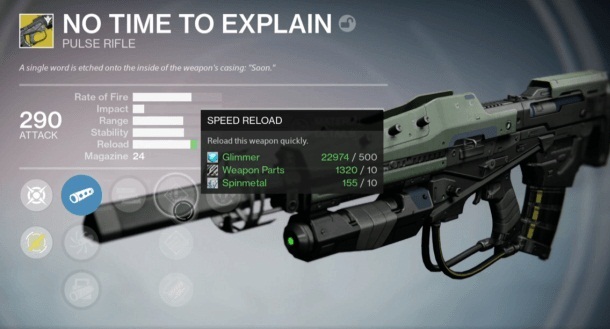
 5 lessons that Batman Arkham Knight can learn from Arkham Origins
5 lessons that Batman Arkham Knight can learn from Arkham Origins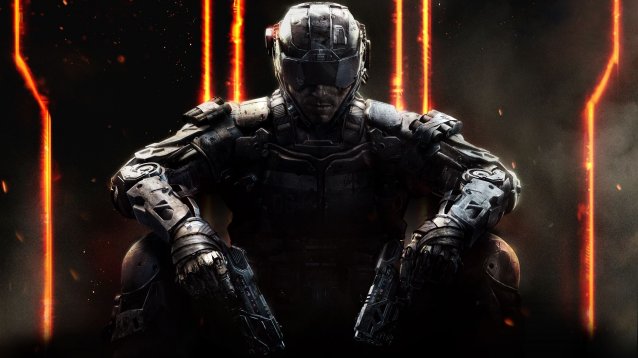 Call of Duty Black Ops 3 PC Fixes Guide
Call of Duty Black Ops 3 PC Fixes Guide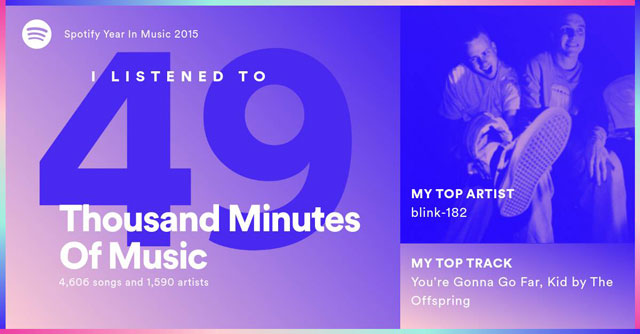 6 Things You Can Learn From Spotify's Year in Music
6 Things You Can Learn From Spotify's Year in Music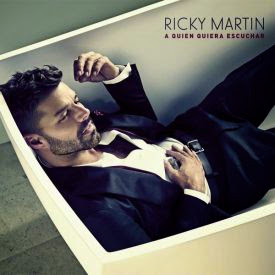 Ricky Martin shares Cover Art for A Quien Quiera Escuchar
Ricky Martin shares Cover Art for A Quien Quiera Escuchar Dark Souls 2: How to defeat the Dragonrider in 10 seconds
Dark Souls 2: How to defeat the Dragonrider in 10 seconds